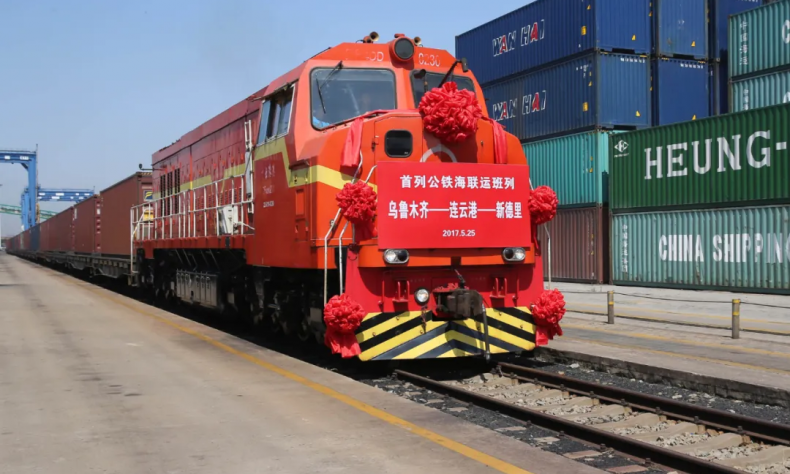Empowering the Economy

Both India and China have huge consumer bases and populations with lifestyles ready to be upgraded to improve standards of living.
It was fascinating to see China release its proposals for mapping out the 14th Five- Year Plan (2021-2025) for National Economic and Social Development and the Long- Range Objectives Through the Year 2035 as the 19th Central Committee of the Communist Party of China (CPC) concluded its fifth plenary session. This plan is of particular importance in the light of the COVID-19 pandemic which has had drastic and long-lasting effects.
The 14th Five-Year Plan dictates that China will strive to make new strides in economic development. Taking new steps in reform and opening up, China will further improve its socialist market economy and continue building a high-standard market system.
It is worth noting that the CPC has set the Two Centenary Goals: to complete the building of a moderately prosperous society in all respects by 2021 when the CPC celebrates it centenary, and to build a modern socialist country that is prosperous, strong, democratic, culturally advanced and harmonious by 2049, the centenary of the People’s Republic of China.
There are 60 key points in the proposals, each one focusing on a particular area and theme ranging from improving the quality of life for citizens to prioritizing rural revitalization and promoting high-quality development of the Belt and Road Initiative.
China has seen rapid growth over the past decades, essentially becoming the world’s manufacturing powerhouse. The megacities, which were carefully selected, specialized and developed over a long time, have reaped huge dividends as they have become the de facto choice of global manufacturing and supply chains. The modularization of factories has enabled customization for Chinese suppliers which makes it essentially effortless to take on any request and serve global markets.
One key point underlined in the proposals is the facilitation of domestic circulation and the opening of a dual circulation strategy involving both foreign and domestic markets. This provides a glimpse into how China seeks to boost its domestic market while simultaneously serving global needs. For an outsider, observing the steps China takes always leads to considering whether they can be applied in your own country’s case. Let’s take a brief dive into that and see what India has done up to now.
India and China have always been compared with each other as both countries started off as developing economies in the late 1940s. Though China is vaster than India in terms of territory, both countries have similar population sizes and large working-age sectors of their respective populations.
After independence, India started on an economic ideology of socialism, and faced a famine-like situation (1965- 1968) and a crippling foreign exchange crisis (1990-1991). It was only after economic liberalization (1991) in India that the doors of the Indian economy were open to foreign players, investors and service providers, thus ending the socialist model while adopting a mixed economy. And it wasn’t all peaceful all these years as India went through multiple wars as well as internal turmoil, political instability, regional disputes and natural disasters, amongst others.
India has one of the youngest populations with one of the largest pools of talented graduates. India lifted millions of people out of poverty while safeguarding the elementary education of its children. It became self-sufficient in feeding its people and even more so as to become the largest exporter of some kinds of food grains. The rapid expansion in the post-liberalization era catapulted the Indian middle class into greater spending as it had now more purchasing options along with increased disposable income. Along came the IT revolution which transformed the service sector of the country. Outsourcing made India the global back office while providing crucial foreign currency. More recently, India has been seeing the births of global companies and start-ups being operated from India but serving global markets, which has strengthened the belief that India can make and provide world-class products and services.
Similar to China, India also has its megacities, though not as carefully planned or built. Its metropolises house most of the nation’s aspirants who come to fulfill their dreams. While a large part of the population is still dependent on agriculture, the smartphone and cheap accessible data have put technology adoption on the fast track.
As we see India and China side by side, there are a couple of similarities as well as disparities in their development. China has the authority to enforce and run programs and initiatives efficiently, while India has a decentralized and more collaborative nature for work involving the central and state governments. China has built powerhouse manufacturing abilities with its skilled labor force and dedicated geographical specializations in a conducive ecosystem, and India has become the global services powerhouse in outsourcing as it stands on the forefront of providing world-class IT services, IT products, and many others thanks to its talent pool.
Both India and China have huge consumer bases and populations with lifestyles ready to be upgraded to improve standards of living. China and India both have the potential to be the biggest economies in the world, surpassing the U.S. Although the numbers do say China is far ahead of India, I believe there is a lot both countries can learn from each other, especially given the similarities and proximity, geographically and socioeconomically. It’s only a matter of time before China and India lead the global economy.
The author is an entrepreneur in Pune, India, who has dealt with Chinese manufacturing professionals in Shenzhen, China. He is a keen learner of globalization trends, supply chains, manufacturing and trade.
 Facebook
Facebook
 Twitter
Twitter
 Linkedin
Linkedin
 Google +
Google +










